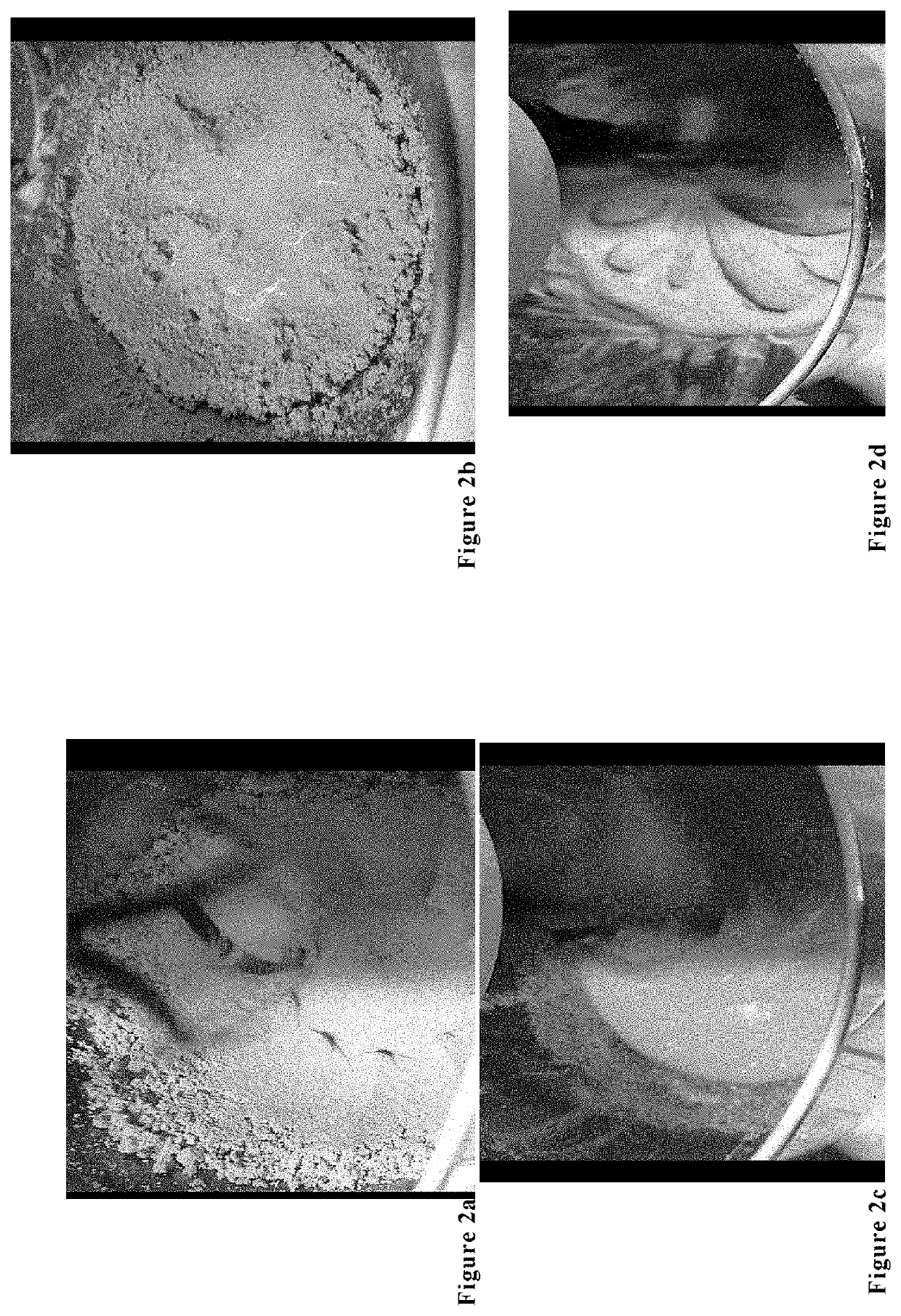Binder Materials
a technology of binders and precursors, which is applied in the field of binder precursors and rehydrated binders, can solve the problems of affecting the use of binders and adhesives, requiring extensive retooling, and toxicity of many commonly used adhesives and binders, and achieves the effects of good mechanical and chemical properties, effective breaking down, and good adhesive characteristics
- Summary
- Abstract
- Description
- Claims
- Application Information
AI Technical Summary
Benefits of technology
Problems solved by technology
Method used
Image
Examples
example 1
Synthesis of Yeast-Based Binders 1-5
[0395]A series of yeast-based binders were synthesised. Baker's yeast (250 g, ˜5% water content, sold under the brand Fermipan, sourced from Lallemand Baking UK) and dextrin (13 g, ˜1-5% water content, sourced from Atlantis Art Materials) were mixed dry in a 1.5 L stirred autoclave equipped with a stirrer. Any lumps (agglomerations) of yeast or dextrin were crushed. The mixture was stirred continuously until no lumps were observed.
[0396]Solvent (320 ml) was then added to the yeast and dextrin mixture to assist mixing, because the yeast material had a very low water content. Each solvent system added to the yeast and dextrin mixture is detailed in Table 1, below:
TABLE 1SolventBinder(mL)1water (320)2acetone (160), water (160)3methanol (160), water (160)4methanol (224), water (96)5ethanol (160), water (160)
[0397]In each experiment, the yeast, dextrin and solvent were mixed in an orbiter (Morphy Richards Standing Orbiter 400020) at 100 to 123 rpm (Spe...
example 2
Dehydration of Yeast-Based Binders 1-5
[0401]Yeast-based binders 1-5 (250-500 g) were, individually, spread evenly on the plates of a dehydrator (Aicok automatic dehydrator, model number ASINPO30KVIN19822, 240 W, available from Amazon UK) with a 3 L capacity. The dehydrator temperature was set at 50° C. and dryness of each sample was observed at various intervals. The time that each binder took to dry was recorded and is shown in Table 2:
TABLE 2Time to dehydrateBinder(hours)110.023.038.048.058.5
[0402]It can be seen that binders 2-5, which contained acetone, methanol or ethanol to replace some of the water, dried faster than binder 1 where only water was used. The use of 50% acetone 50% water was found to be particularly beneficial in terms of its drying time—drying in only 3 hours compared to 10 hours for water alone.
[0403]Increasing the amount of methanol used from 50% to 70%, and therefore decreasing the amount of water from 50% to 30%, did not significantly alter the drying time, ...
example 3
Rehydration of Powdered Binders 1′-5′
[0406]100 g of each dehydrated, powdered yeast-based binder 1′-5′ was mixed with water (86 g). The resulting composition was mixed at 20-40° C. until a homogenous and free-flowing fluid was obtained, giving rehydrated binders 1″-5″. The dry content of each rehydrated binder 1″-5″ was about 53 wt %.
PUM
| Property | Measurement | Unit |
|---|---|---|
| vol % | aaaaa | aaaaa |
| vol % | aaaaa | aaaaa |
| pH | aaaaa | aaaaa |
Abstract
Description
Claims
Application Information
 Login to View More
Login to View More - R&D
- Intellectual Property
- Life Sciences
- Materials
- Tech Scout
- Unparalleled Data Quality
- Higher Quality Content
- 60% Fewer Hallucinations
Browse by: Latest US Patents, China's latest patents, Technical Efficacy Thesaurus, Application Domain, Technology Topic, Popular Technical Reports.
© 2025 PatSnap. All rights reserved.Legal|Privacy policy|Modern Slavery Act Transparency Statement|Sitemap|About US| Contact US: help@patsnap.com



